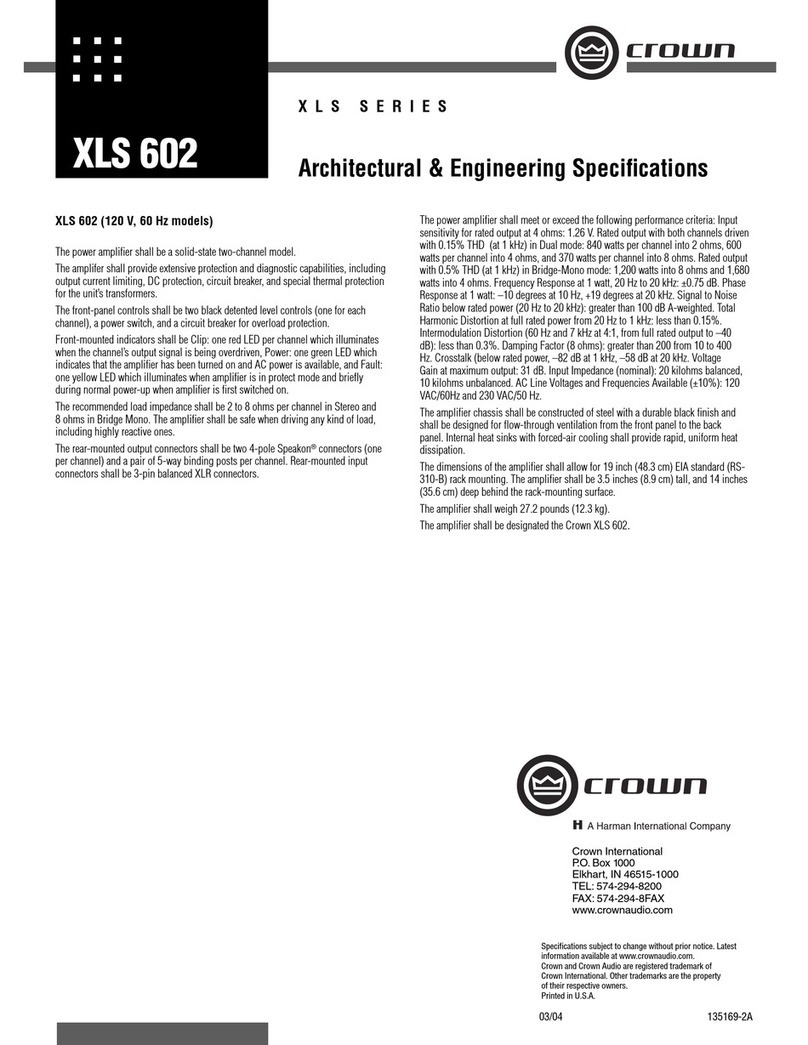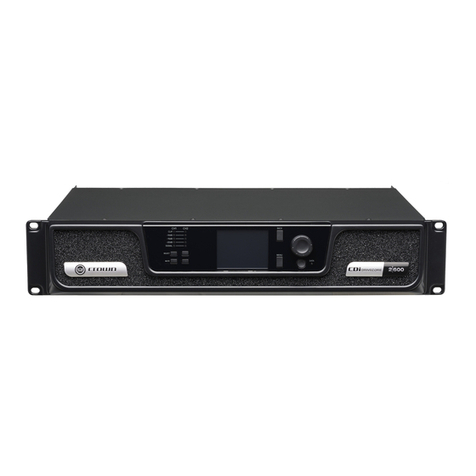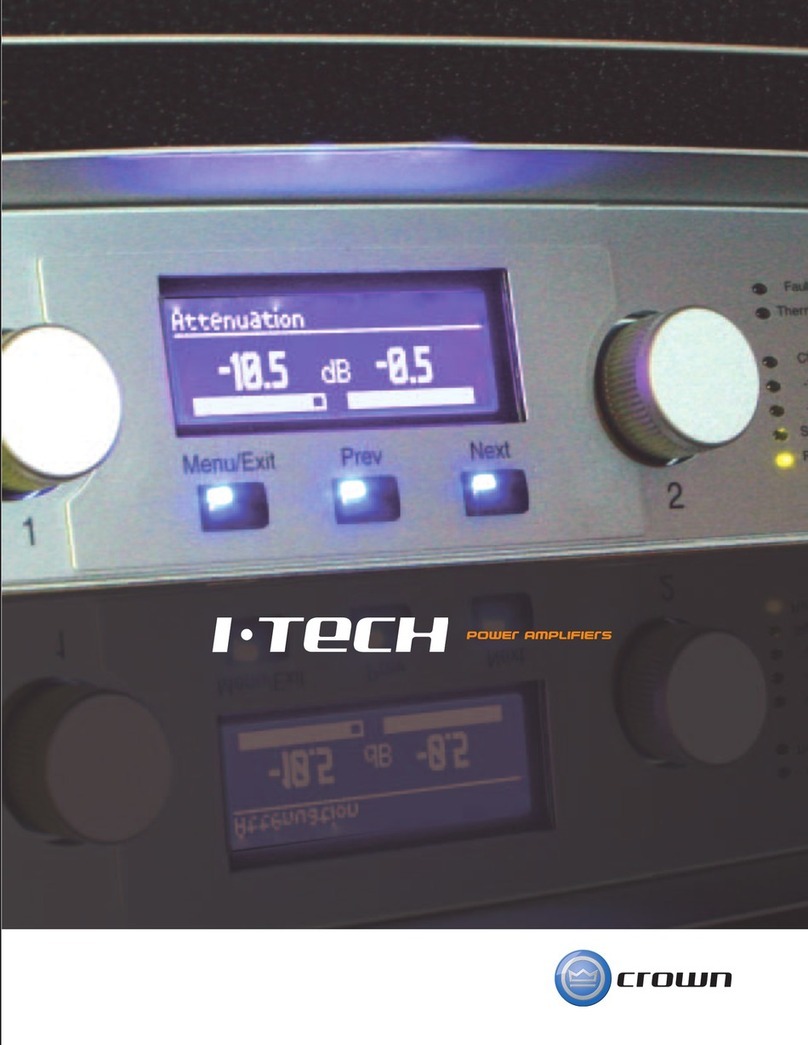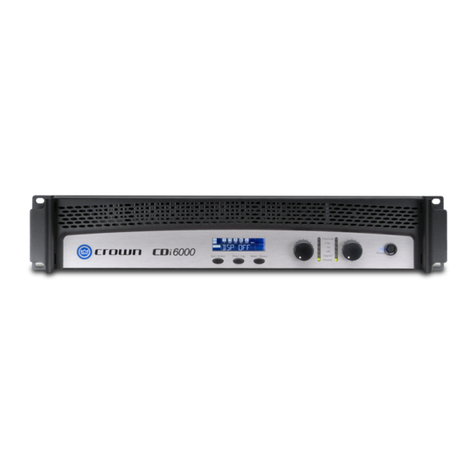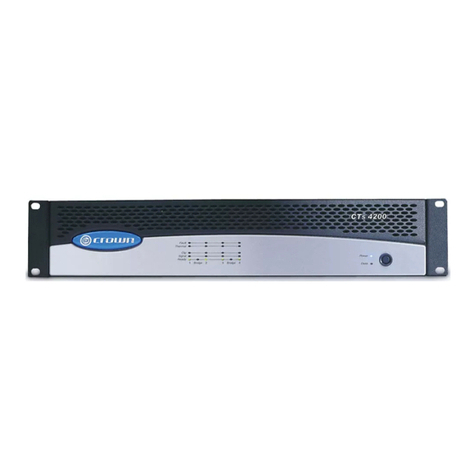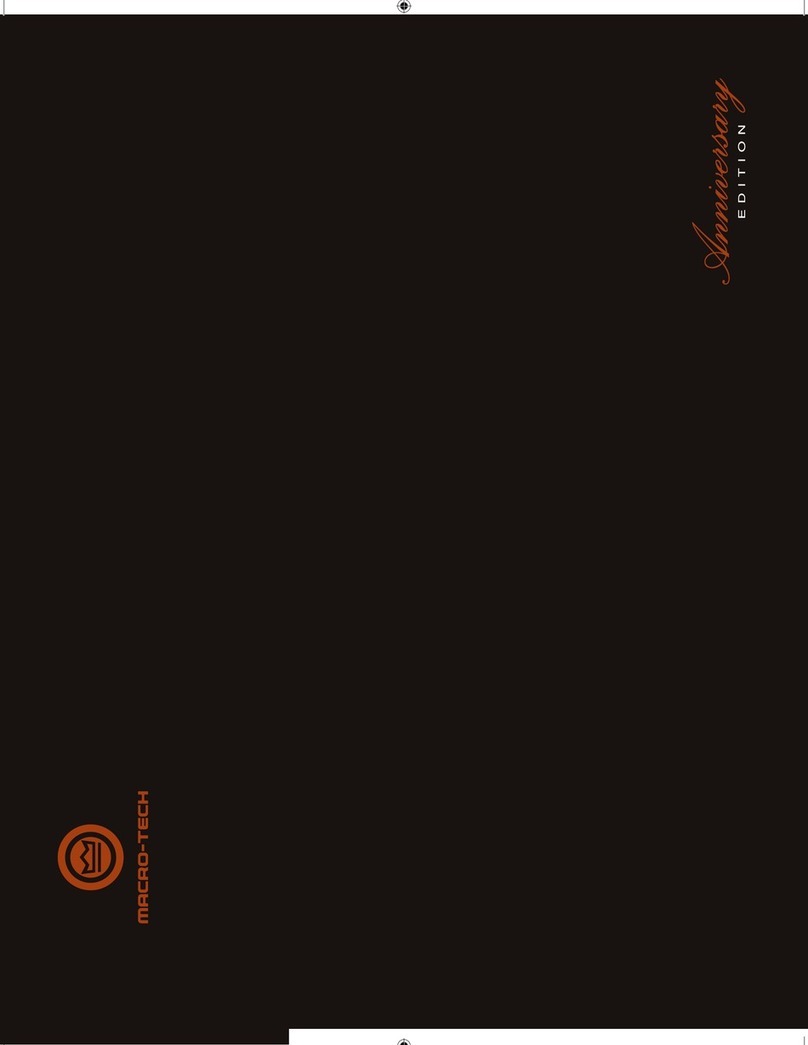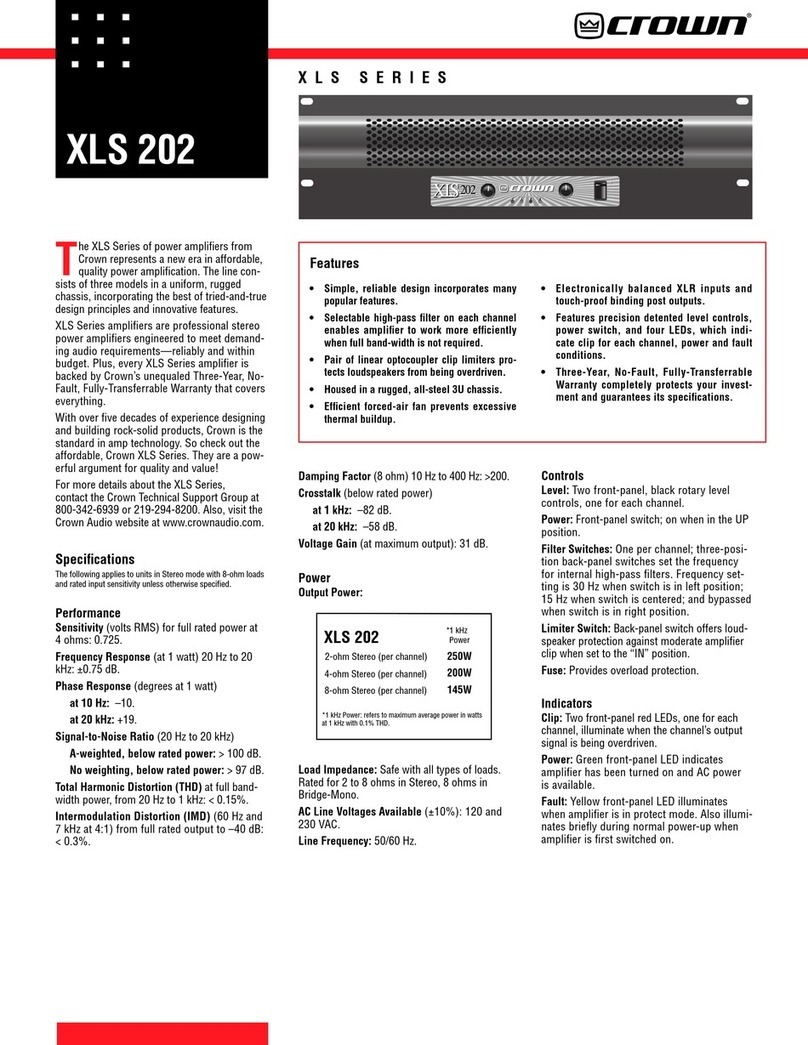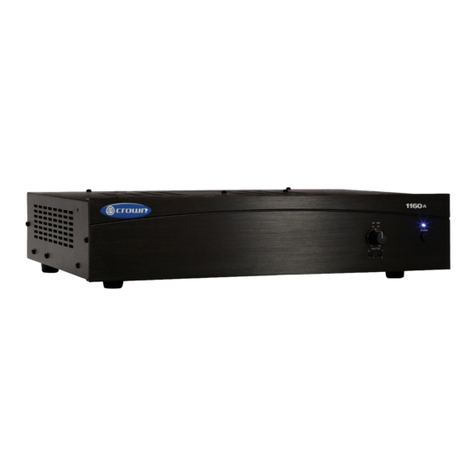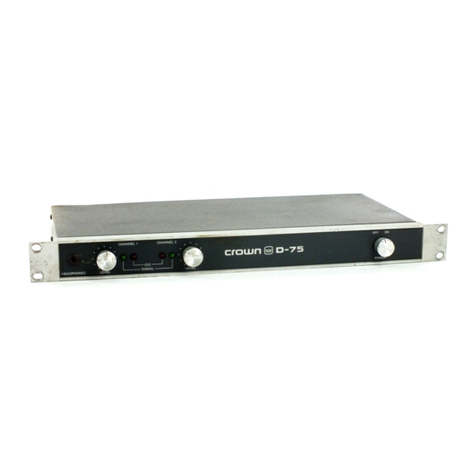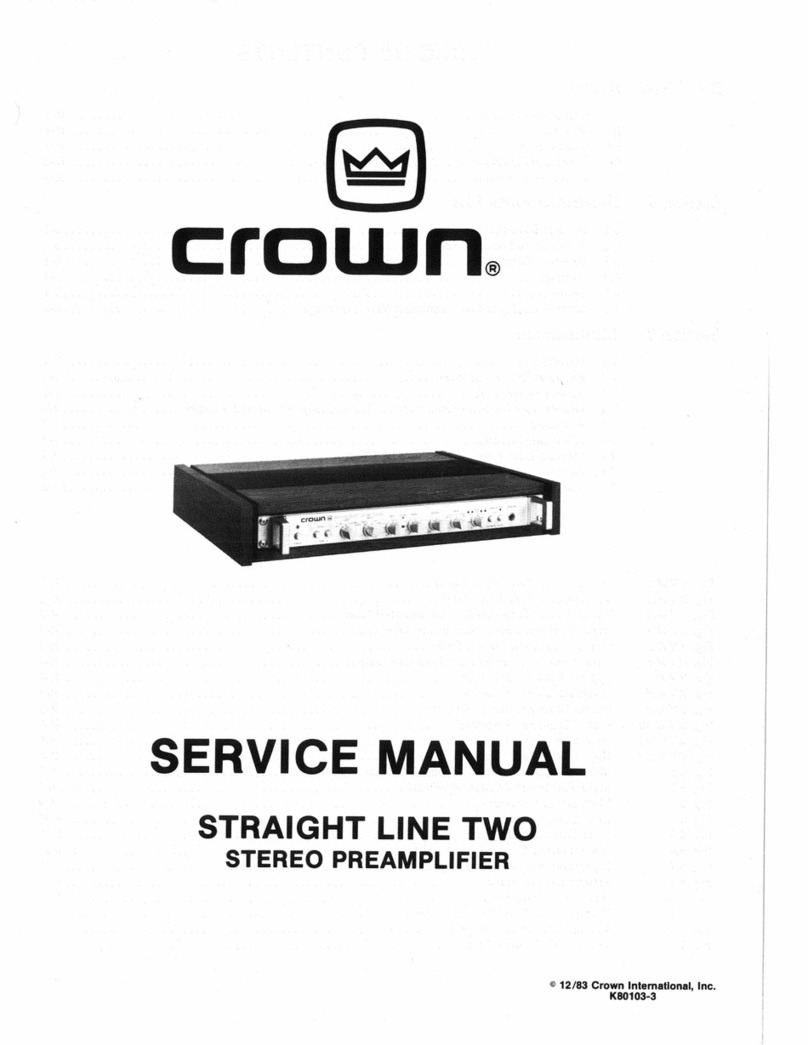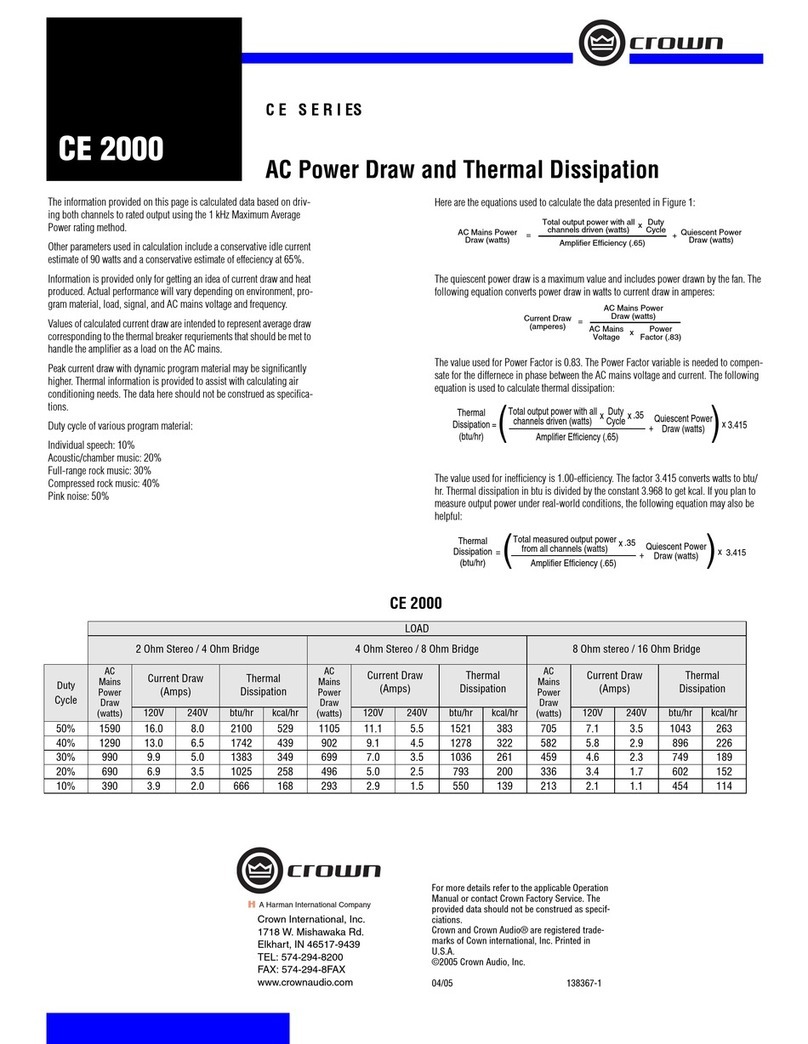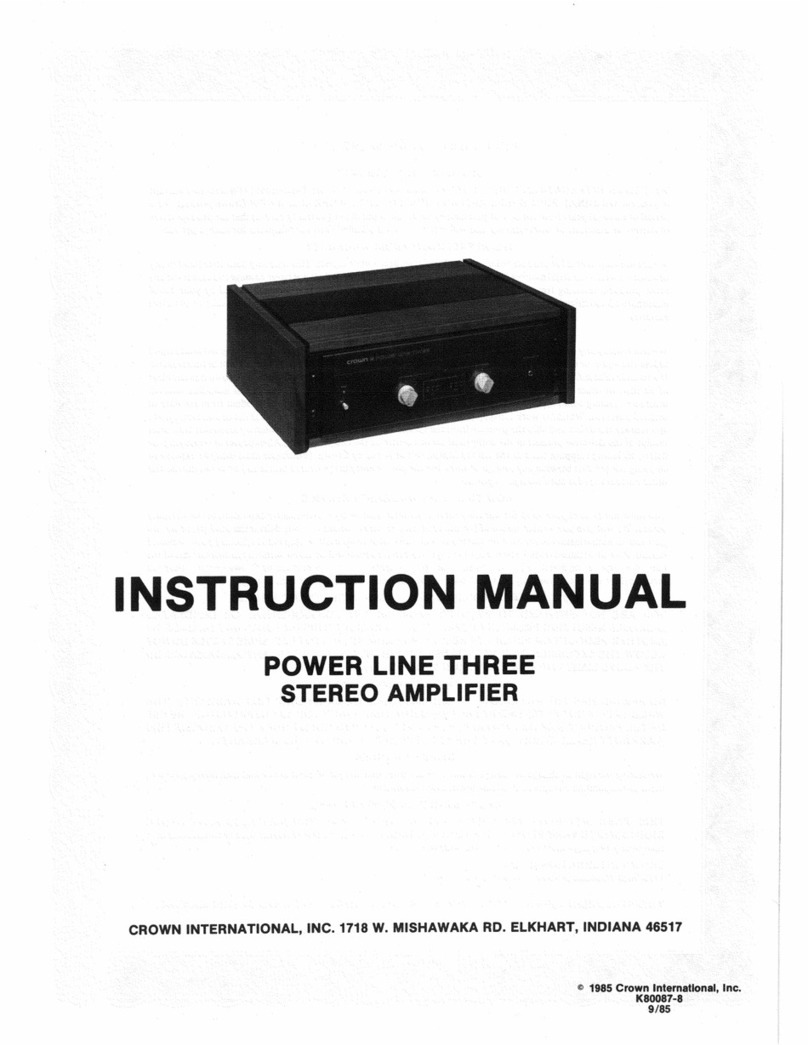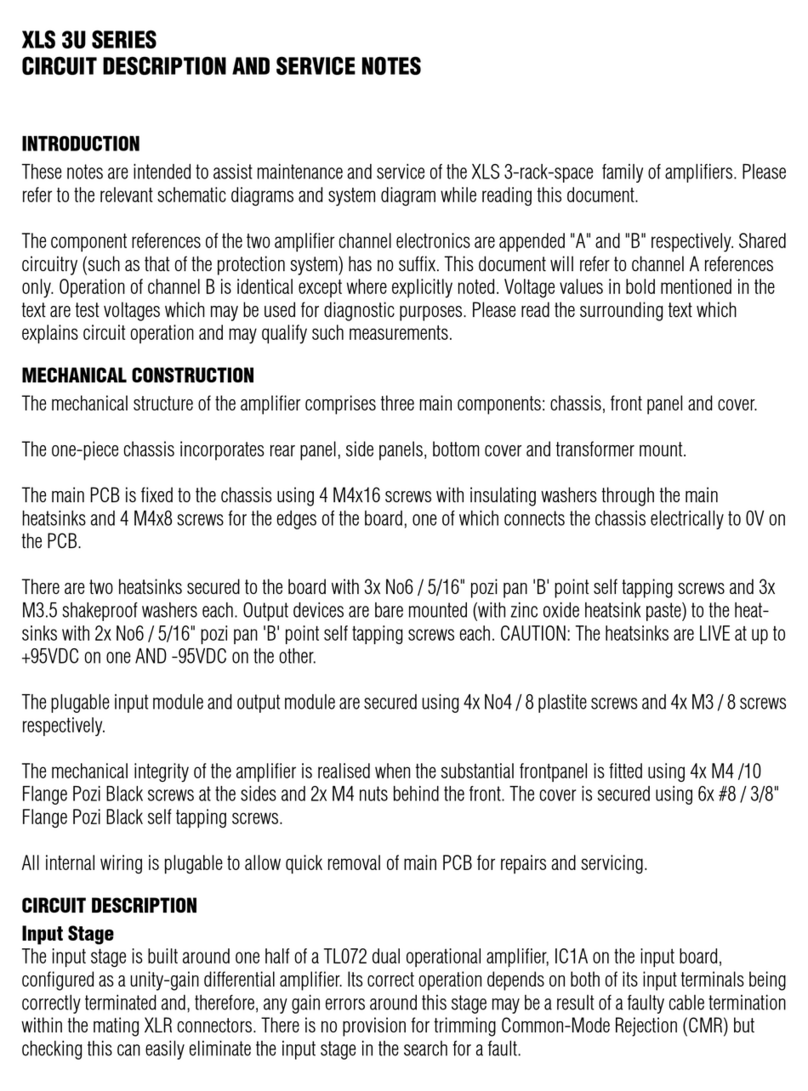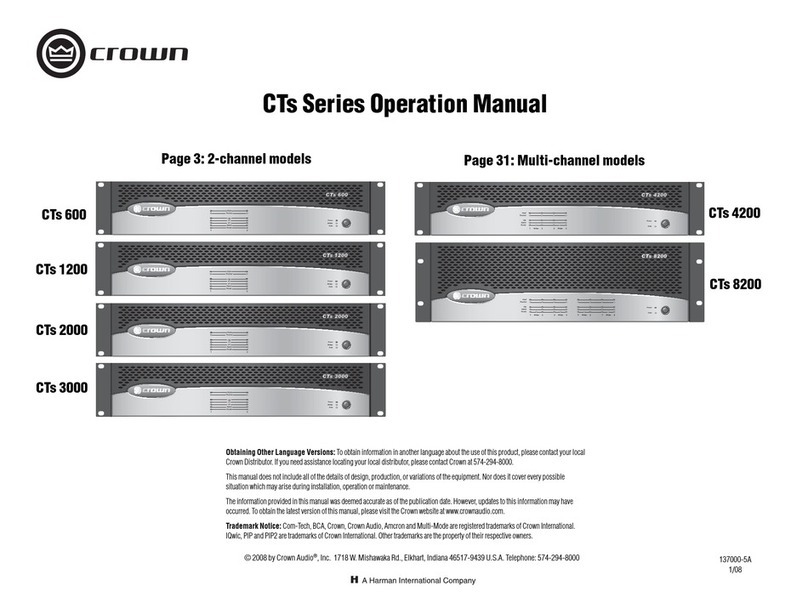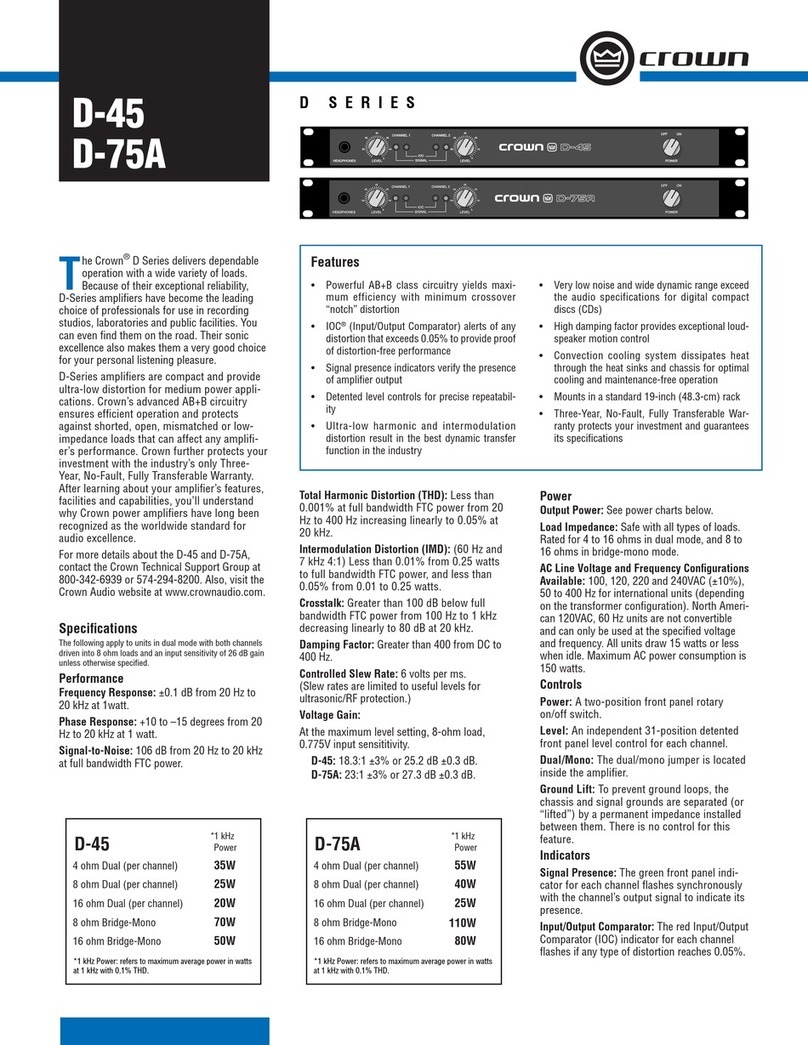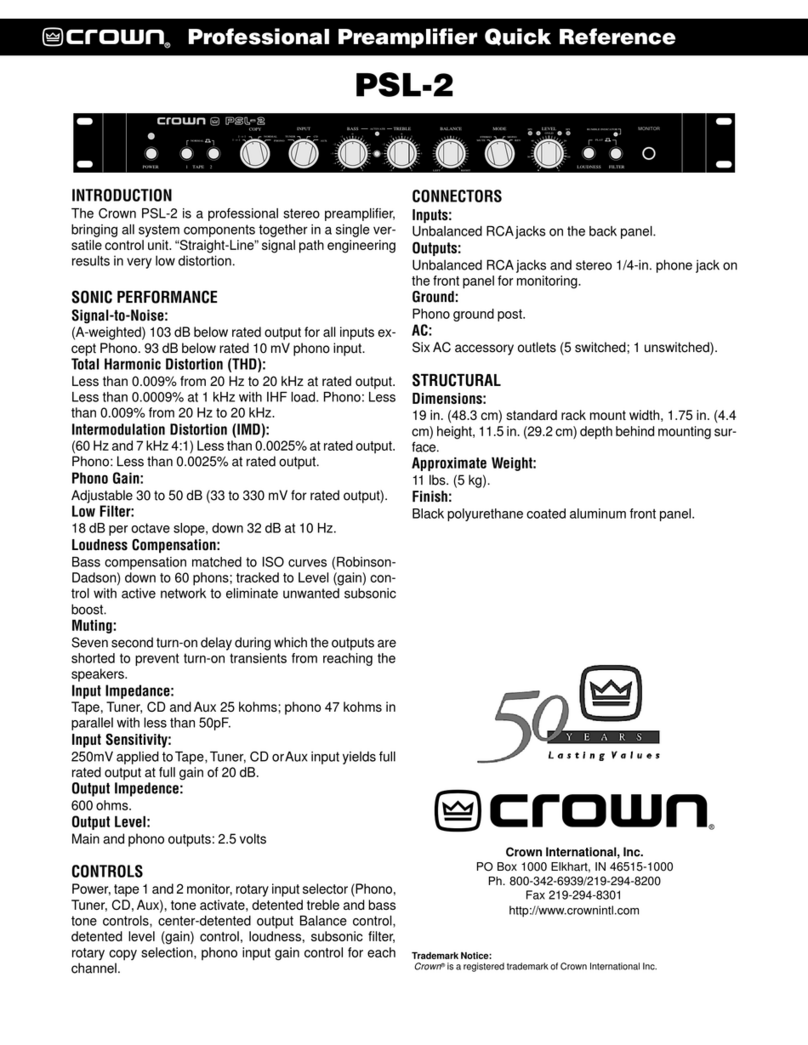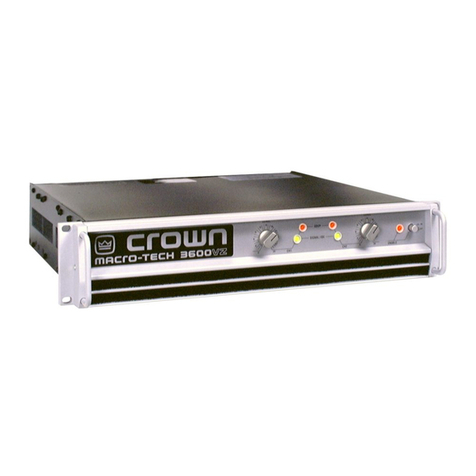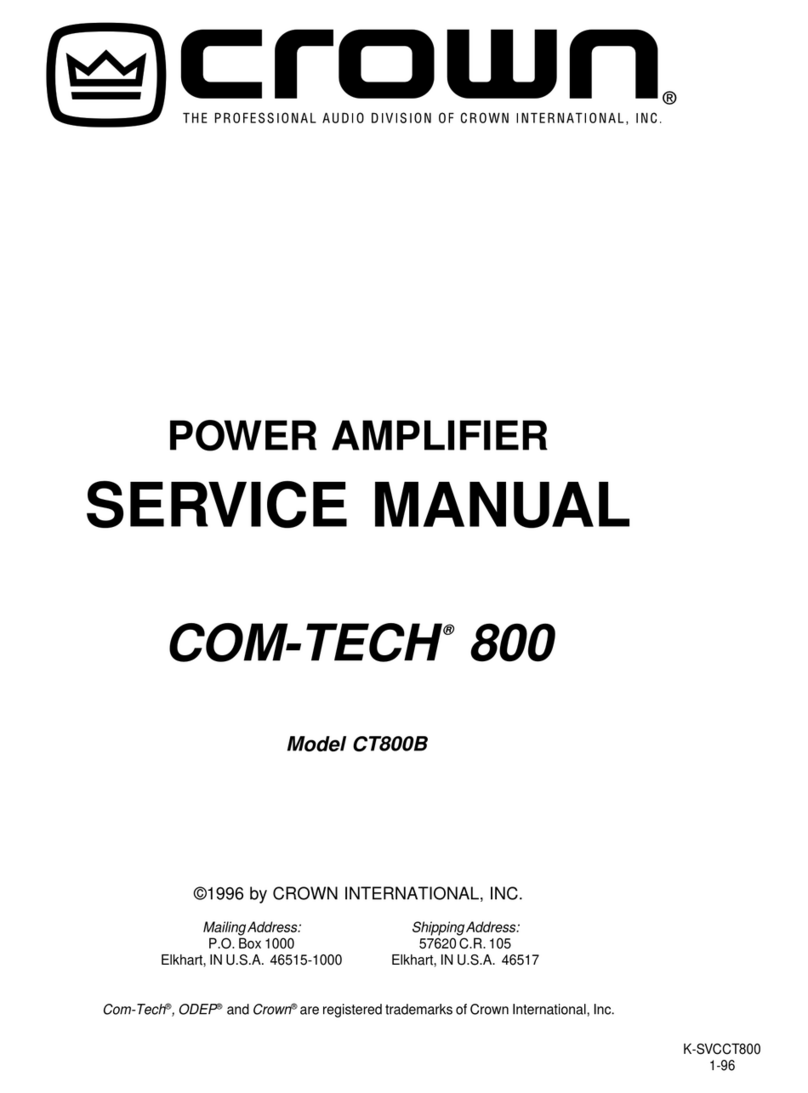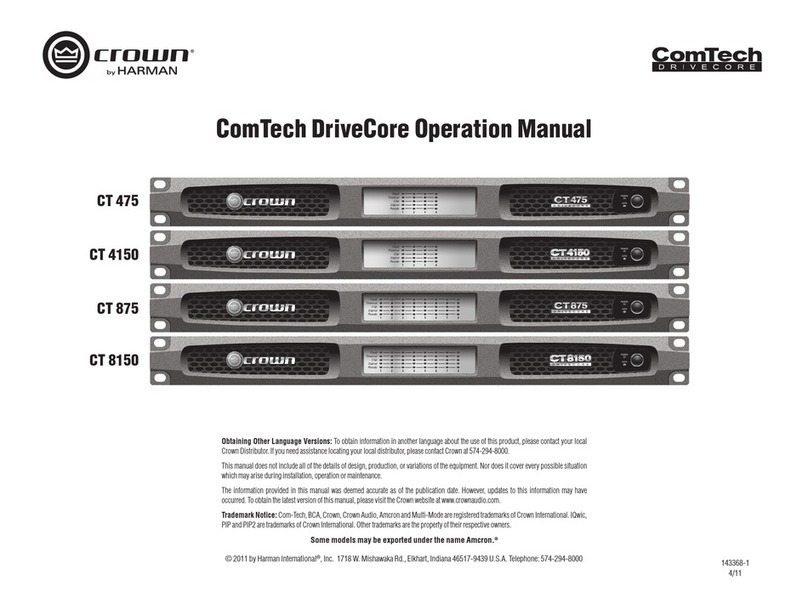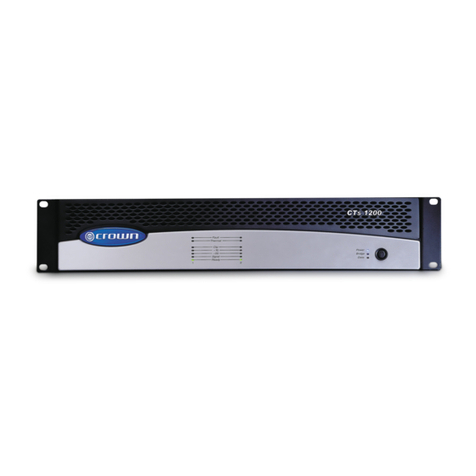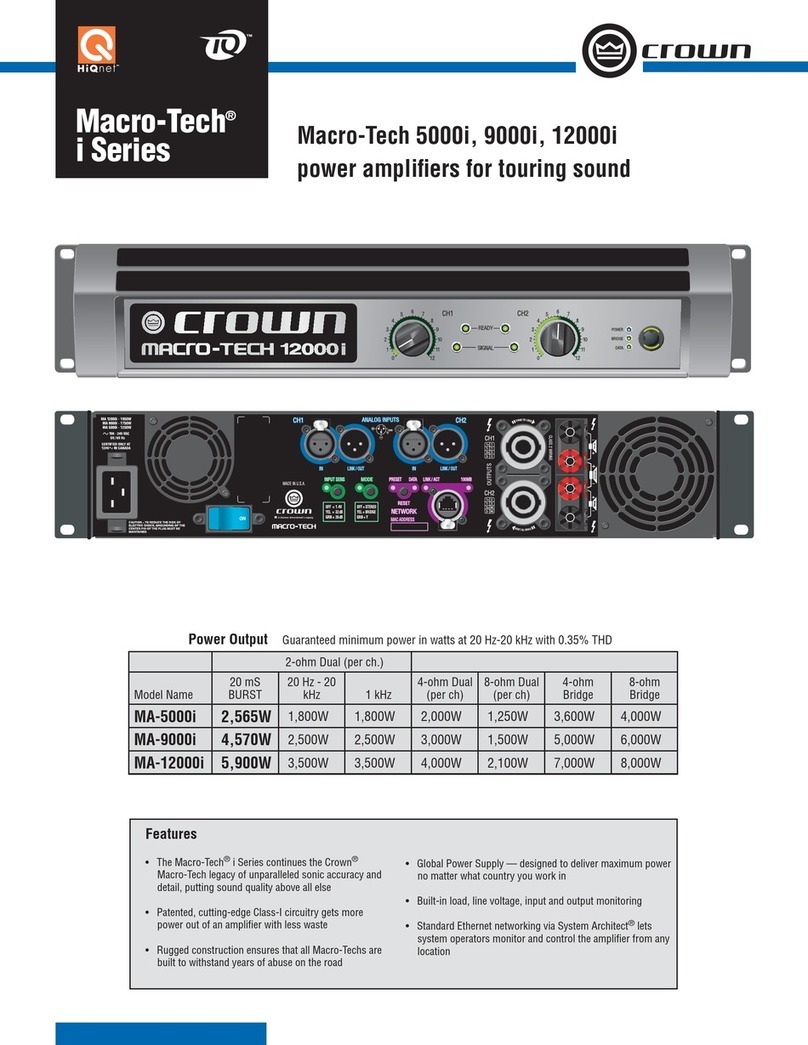Rev
8
-
.
.-
Studio
Reference
Service
Manu3l
@crown
1
Bntroductisn
...................................................................................................
3-1
........................................................................
1.
1
The
Stndis
Referents
1-1
1.2
Scope
................................................................................................
1-1
............................
1.3
Warranty
.~.~~~~~...~.~..A~~~~~....,.........
1-1
2
Specifications
................................................................................................
-2-1
2
.
"Berformance
......................................................................................2.
1
2.2
Pswei
.................................................................................................
2-1
23
Cantrofs
.............................................................................................
2-2
2.
4
f
ndicators
..........................................................................................
2.2
......................................................................................
2.5
l~putsautput
2-3
2.6
Output
Signal
.....................................................................................
2-3
22
Protcctisn
..........................................................................................
2.3
2.8
Construction
......................................................................................
2.3
3
Va1tags
Conversion
........................................................................................
3-1
.................................................................................................
4
Circuit
Theory
4-4
...........................................................................................
4.1
Overview
4-1
4.2
Features
.............................................................................................
4-2
4.3
Frant
End
Operation
..........................................................................
4-2
4.3.1
Balanced
Gnin
Stage
(BGS)
.....................................................
4-2
4.3.2
Variable
Gain
Stage
(VGS)
........................................................
4-2
4.3.3
Error
Amp
..................................................................................
4.2
4.4
Voltage
Amplification
.........................................................................
4-2
4.4.1
Voltage
Transfators
....................................................................
4.3
..................................................
4.4.2
bast
Voltage
Amplifiers
(LVAS)
4-3
...............................................................
4.5
Grounded
Bridge
Topology
4-4
.........................................................................
4.5.
Wigh
Side
(HS)
-4-4
4.5.2
Law
Side
(LS)
............................................................................
4.4
....................................
4.6
Output
Device
Emulation
Prccalectian
(OBEP)
4-5
4.7
Ganliol
Circuitry
................................................................................
4-6
4.7.1
DC$LF
Protect
............................................................................
4-6
4.
7.2
fault
Circuit
...............................................................................
4-6
4.7.3
Turn
On
Belay
...........................................................................
4-6
................................................................................
4.7.
4
Fan
Corjtrol
4-6
4.8
Power
Supply
....................................................................................
4-6
4.8.
1
AC
kine
Fiiter
............................................................................
4-6
423.2
Soft
Start
...................................................................................
4-6
4.8.
3
Over
Voltage
Protection
............................................................
4-7
..............................................................................
4.9
Display
Circuitry
"4-7
............................................................................................
4.9.1
1QC
4-7
4"9+2
ODEP
........................................................................................
4.7
........................................................................
433
Signal
Indicafis~s
4.7
